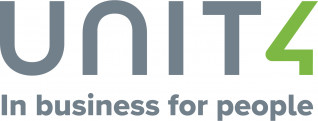A coaching relationship involves two (or more) people who make up one team. Two people, same team, sounds obvious enough. Sometimes, however, coaching initiatives will bypass this fundamental consideration and drive headlong into the transactional stuff of imparting information. People are all “wired” differently, and it is that mutual understanding of this “wiring”, as well as applying established principles of effective teams, that contributes to the success of a coaching relationship.
The 5E Coaching framework, a five-step coaching methodology first introduced by The Predictive Index, begins with laying the foundation of trust between the two partners based on an objective awareness of each other’s behaviours and drives. In the succeeding steps described below, this awareness is leveraged to:
- Recognize patterns of gap and fit
- Formulate coaching objectives, and
- Establish the “rules of engagement.
Step 1 – Enroll
The objective of Enroll is to build the foundation of trust between the partners in the coaching relationship. This trust naturally flows from the vulnerability that happens when the two individuals share information about their own behavioural drives and needs. An objective behavioural assessment* is helpful in providing these personal perspectives and mitigate the possibility of bias. Understanding a person’s disposition to such workplace realities as leadership style, response to conflict, mode of communication, approach to people interaction, adherence to detail and comfort with change, will be helpful in the subsequent stages of the 5E process, and lead to greater understanding of each other’s behaviours and motivations throughout the relationship.
Step 2 – Envision
In Envision, the mentee’s behavioural information is contrasted with the behaviours required by the role or skills being targeted. From this analysis patterns of gap and fit will emerge that inform the next stage of articulating concrete coaching objectives.
Step 3 – Establish
In Establish the partners develop consensus on the specific areas of gap and fit uncovered in Envision and formulate SMART** goals to build the adaptive capacity necessary to bridge gaps, and leverage areas of natural fit. Success criteria are agreed upon, key performance indicators are identified, specific activities are planned and expectations for the accountability of each partner are clearly established.
Step 4 – Execute
The objective of Execute is to do just that, effectively execute the plan. Awareness of each other’s behaviours and drives as well as the trust created in Enroll will be essential in responding to such potential flashpoints as delivering and receiving critical feedback, getting past one’s personal bias, managing competing priorities, addressing demands on time and sustaining commitment to the project.
Step 5 – Evaluate
Any initiative worth doing is worth reviewing. Included in the formative and summative debrief conversations will necessarily be an honest analysis of each partner’s impact on the process. This very personal perspective will be greatly aided by the foundation of trust that is developed in Enroll and reinforced throughout the 5E coaching process.
Summary
Great coaches recognize that laying a groundwork of trust is the first step in a productive coaching relationship. Taking the time to be more self-aware and partner-aware requires vulnerability but, as Patrick Lencioni points out, individual vulnerability reinforces the trust of an effective team. Coaching initiatives that don’t recognize the “wiring” of the individuals involved and ignore high-yield team strategies, deprive the partners of an essential opportunity to support their relationship, establish meaningful objectives, and ultimately guide the process to a successful conclusion.
—————————–
Notes:
* In my coaching work with clients, the Predictive Index Behaviour Assessment is used to inform the process of sharing information between coaching partners.
**SMART goals – Specific/Measurable/Achievable/Realistic/Time-Bound
Lencioni, Patrick (2002). The Five Dysfunctions of a Team, A Leadership Fable. Jossey-Bass.
Mitch LePage is a former public sector leader and currently serves as a Managing Principal with Toronto-based talent strategy firm Predictive Success Corporation. Mitch supports people strategy for private, public and not-for-profit clients. To learn more about 5E Coaching or to discuss talent strategy issues contact Mitch at [email protected]


.png)

.jpg)



